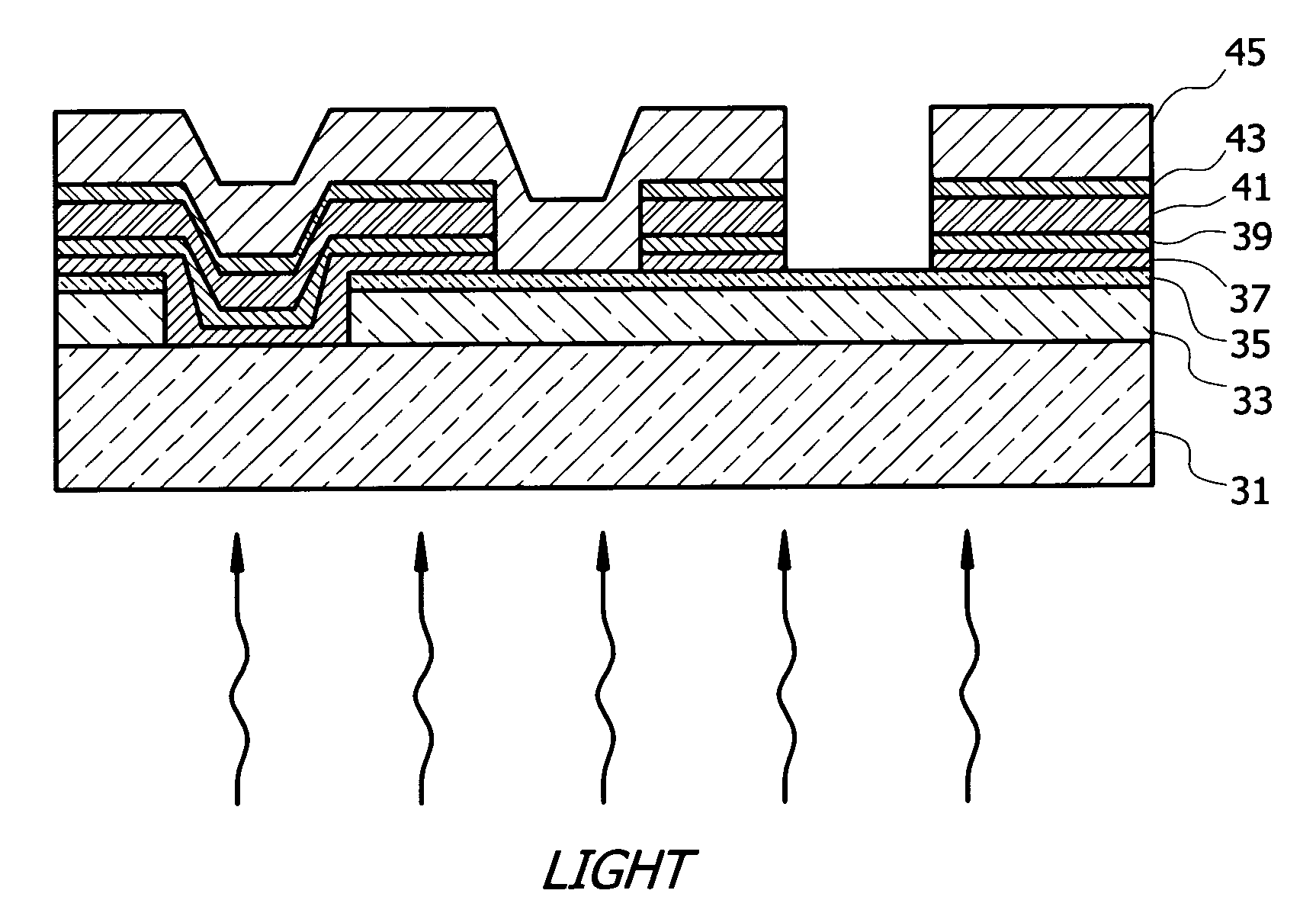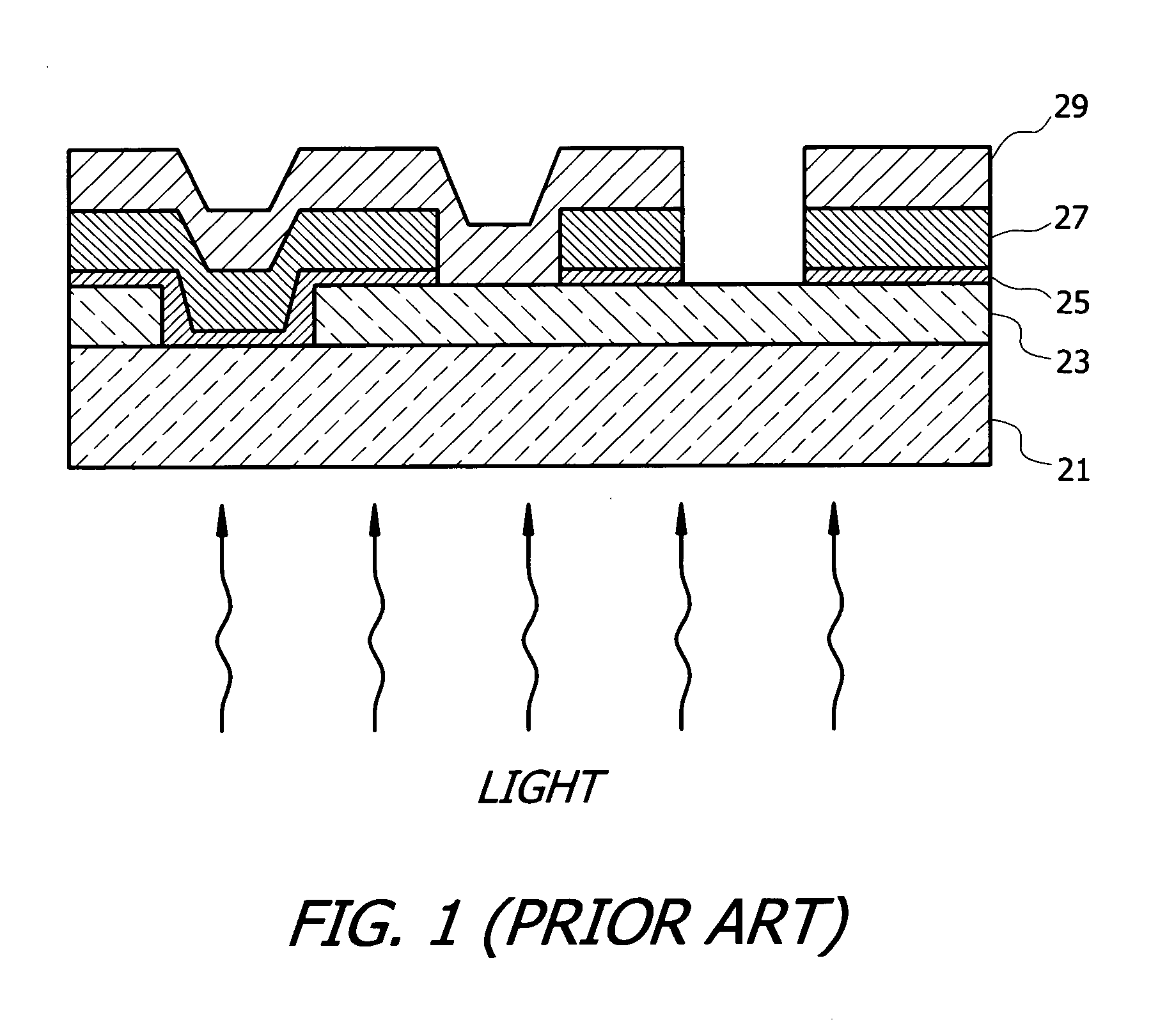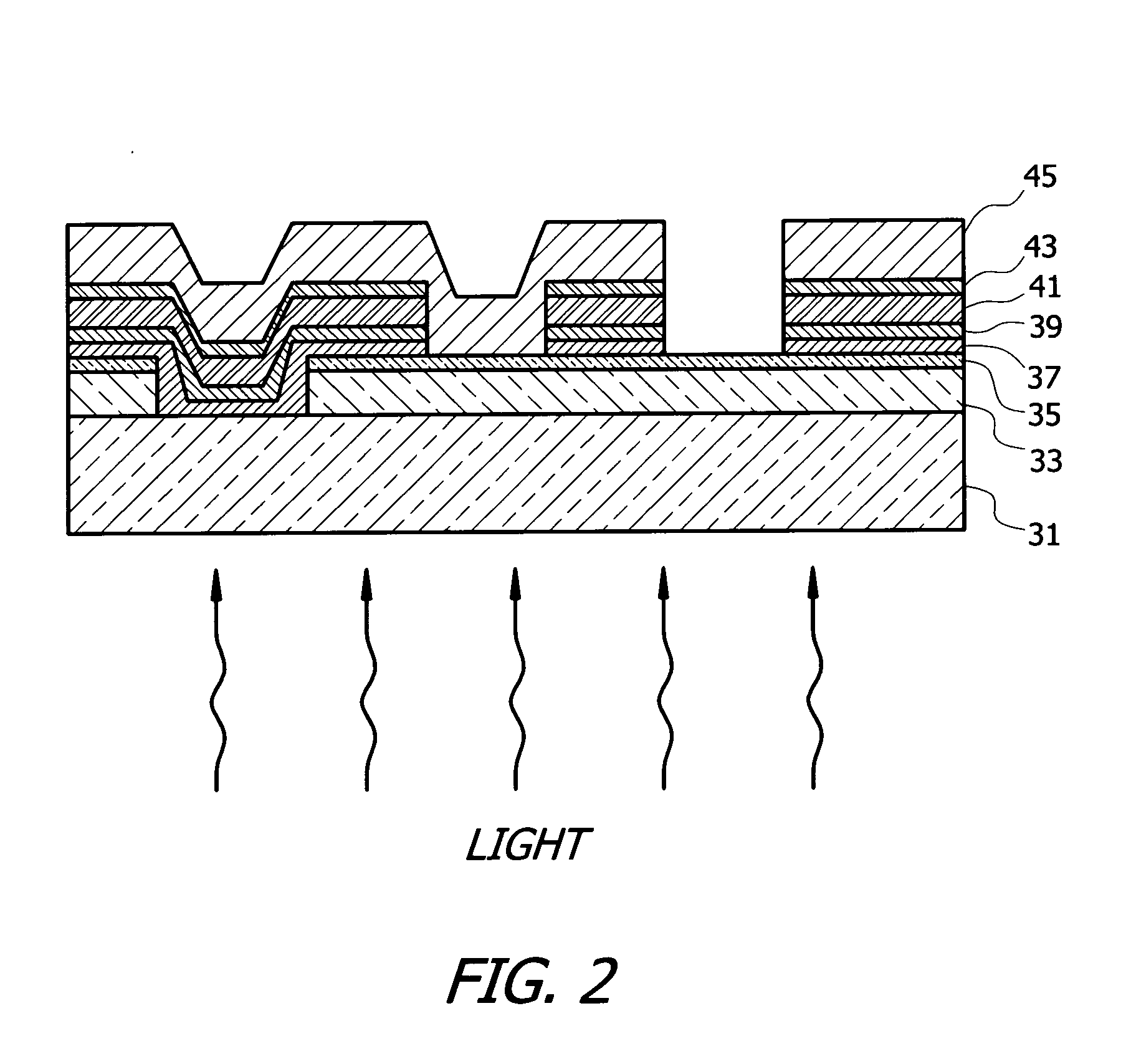Multiple band gapped cadmium telluride photovoltaic devices and process for making the same
a photovoltaic device and cadmium telluride technology, applied in the direction of sustainable manufacturing/processing, final product manufacturing, vacuum evaporation coating, etc., can solve the problems of limiting the short circuit current (jsub>sc/sub>) of the solar cell, low optical transmission coefficient of approximately 80%, and further complicated, etc., to achieve the effect of improving conversion efficiency
- Summary
- Abstract
- Description
- Claims
- Application Information
AI Technical Summary
Benefits of technology
Problems solved by technology
Method used
Image
Examples
Embodiment Construction
[0027]The present invention overcomes the inability of the conventional CdTe photovoltaic device to absorb low energy photons by the spectrum splitting or multi band gap approach, wherein multiple absorber layers with different band gap energies are employed to absorb photons from a wider range of the solar spectrum. Compared with the conventional CdTe absorber having a band gap energy of 1.45-1.5 eV, an absorber layer with a higher band gap energy can convert high energy photons to higher open circuit voltage (Voc), while an absorber with a lower band gap energy can absorb lower energy photons and allow more efficient use of the solar spectrum.
[0028]The preferred embodiment of the present invention as applied to a CdTe photovoltaic device having three absorber layers will now be described with reference to FIG. 2. Referring now to FIG. 2, the illustrated device has an optically transparent dielectric substrate 31, through which radiant energy or sunlight enters the device; a layer ...
PUM
| Property | Measurement | Unit |
|---|---|---|
| Temperature | aaaaa | aaaaa |
| Temperature | aaaaa | aaaaa |
| Temperature | aaaaa | aaaaa |
Abstract
Description
Claims
Application Information
 Login to View More
Login to View More - R&D
- Intellectual Property
- Life Sciences
- Materials
- Tech Scout
- Unparalleled Data Quality
- Higher Quality Content
- 60% Fewer Hallucinations
Browse by: Latest US Patents, China's latest patents, Technical Efficacy Thesaurus, Application Domain, Technology Topic, Popular Technical Reports.
© 2025 PatSnap. All rights reserved.Legal|Privacy policy|Modern Slavery Act Transparency Statement|Sitemap|About US| Contact US: help@patsnap.com



